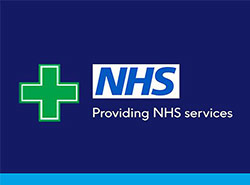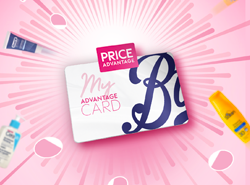Try out these self-help steps
Whether you’ve stubbed a toe (ouch!) or strained a muscle, pain can often put a dampener on your day. It can be short-lived or it can stick around for a long time. From tablets to topical treatments, we’ve listed a few ways you can help relieve it – take a look!
1. Joint supports
We all need a little support sometimes – the same goes for our joints!. Joint supports for knees, wrists and ankles can help reduce pressure, pain and swelling around an injured area. They can also help your injured joint recover by stabilising it without restricting movement – clever stuff!
If you're not sure which type of support is best for you, our pharmacists can help you decide. Don’t forget, icing your injury and getting some rest should also be part of treating your injury in the first couple of days. Taking pain relief is an option, too.
Help ease discomfort with our selection of joint supports.
2. Topical anti-inflammatory pain relief
From gels and patches to sprays– topical anti-inflammatory pain relief products come in many shapes and sizes. They are ideal for easing muscle ache or joint pain because you can apply them directly to the affected area – handy! They get absorbed into your skin and help relieve pain and may help reduce swelling. Often, GPs prescribe topical products as an alternative to tablets as they can have fewer gastro-intestinal side effects.
It’s super important to remember topical pain relief products should never be applied to open wounds or damaged skin. Always read the instructions
Shop our easy-to-apply topical treatments. Always read the label.
3. Hot & cold therapy
Hot and cold therapies are easy and effective ways to help relief discomfort. They can help minimise your recovery time from injuries like muscle strain or a stubbed toe. So, how do they work? Let’s take a closer look.
Hot therapy – often called heat therapy – works by improving blood flow to your injury and is most commonly used to treat things like sore muscles or stiffness. Psst! If your injury is new, hot therapy isn't for you because it may make the problem worse. The exception to this is when you have a new lower back strain. A lot of the pain, in this case, is caused by muscle spasm rather than tissue damage, so heat is often more helpful than ice. Increasing the temperature around your injured area can help soothe and relieve feelings of discomfort. If you’re using heat therapy, always apply things like heat patches and hot water bottles safely. Remember to only keep them on the injured area for about 10-15 minutes.
Cold therapy decreases the blood flow to an injury, reducing the swelling that can cause pain. It’s great for mild sprains and strains or sports injuries. If you have this type of injury, it’s best to stick to cold therapy for the first couple of days. Things in your freezer like a bag of frozen vegetables or ice cubes wrapped in a tea towel are great methods of cold therapy – how cool! (See what we did there?). Just like heat therapy, remember to use cold therapy on your injury for about 10-15 minutes or when the ice starts to melt.
Discover more of our quick and effective hot and cold therapies.
4. Over-the-counter oral pain relief
Over-the-counter medicines can be a quick and easy way to help relieve your pain, but it’s important to understand which ones may be suitable for you.
Most non-nerve pain like general headaches can be treated with paracetamol tablets. Make sure to always read the label. One or two 500mg tablets up to four times a day is a recommended dose for adults, and you should never take more than eight tablets in one 24-hour period. If your pain lasts for more than three days, speak to your GP. Do not take more than one paracetamol-containing product at the same time. Non-steroidal anti-inflammatory medicines (NSAIDs) like ibuprofen work better on period pain and inflammatory pain like toothache, strains and sprains. Make sure to always read the label. The usual dose for adults is two 200mg tablets up to three times a day. They shouldn’t be used for long periods unless recommended by a medical professional.
If pain relief medicines like paracetamol and ibuprofen haven’t eased your pain, you could consider co-codamol, but this should be a last resort treatment method as it can be addictive. It’s a combination of paracetamol and codeine, and a low strength of co-codamol can be brought over the counter, following a consultation with a pharmacist. Higher strengths are only available on prescription from your GP. You shouldn’t take co-codamol continuously for more than three days without consulting your doctor first. Always follow the dosage instructions, and don’t take more than eight tablets in one 24-hour period.
If you're not sure which pain relief is suitable for you or if you have any questions, speak to your pharmacist or GP – they’ll be able to help you.
Discover our selection of pain medication. Always read the label.
5. TENS machines
A TENS machine (or transcutaneous electrical nerve stimulation machine if we’re being technical), helps to temporarily relieve minor aches and pains when used alongside painkillers. It’s a small, battery-operated machine that attaches to your body with sticky pads. It works by transmitting electrical pulses to help block pain messages to your brain and you can use it with things like period pains and arthritis.
A TENS machine isn’t suitable for all types of pain and isn’t suitable for everyone, such as those that have a pacemaker. Therefore, it's important that you read the product leaflet or speak to your GP before using the device. It’s super important to take things slowly when using one – make sure you find the settings most comfortable for your pain so you don’t make it worse. Use it for about 15-20 minutes a time, several times a day and always read the instructions.
Get relief when you need it most with our range of TENS machines.
6. Orthotics
If you experience discomfort in your feet, orthotic foot care – including nifty things like insoles and shoe inserts – can help relieve your pain. Made of foam or gel, insoles fit inside your shoes and help cushion, reduce pressure and support specific areas of your foot or your whole foot when wearing. They come in different shapes and sizes – just like feet. It's a good idea to make sure they fit comfortably in your shoes. Don’t worry if they feel a bit odd the first time you use them – your feet will need time to adjust.
If your foot pain doesn’t get any better, you may need orthotics that are custom-made for you. Speak to your GP or podiatrist (a health professional who can help with common foot problems), as they’ll be able to advise you on the next steps.
Get targeted support with our selection of orthotics products.
7. Gentle exercise
Get up and go! If you’re feeling a bit under the weather because of a strain or sprain, resting it can often be tempting – who doesn’t want a day in bed, right? But in reality, resting your injury for a long time may not do you a lot of good. Gently moving your body can help keep your muscles and joints working as they should, plus it can do wonders for your mental wellbeing, too!
Exercise shouldn’t be strenuous – things like daily stretches or a quick potter around the garden will do just the job. Psst! Before you don your sportswear and break out the yoga mat, have a chat with your GP or a physiotherapist about what kind of exercises are okay for you. They’ll help you choose something that won’t put your injury under too much strain.
Frequently asked questions
What is the strongest pain relief?
There are a number of pain relief options that you could consider trying, but there isn’t one that is thought to be the strongest. Pain relief is individual, and what works for one person may not work so well for another. It also depends on the type of pain you’re trying to manage.
However, both heat therapy and cold therapy can be beneficial for certain types of discomfort. This is because heat causes the blood vessels to dilate which stimulates the healing of damaged tissues while easing discomfort – this is particularly good for muscle aches and strains. While cold (or ice) therapy reduces blood flow to a particular area which can help ease inflammation and swelling – this is best for acute injuries and discomfort in the joints.
What is the fastest way to get rid of pain?
This can vary depending on the type of pain and the underlying cause of pain. The following can be considered if appropriate:
- Physical therapies – this includes heat and cold packs, massage and exercise, which can be good for relieving discomfort from injury, as well as alleviating muscle aches and strains
- Psychological therapies – methods like meditation and mindfulness can help manage certain types of pain such as tension headaches, by reducing stressful feelings and muscle tension
- Pain relief medicines – these are good for quickly treating pain when it strikes, whether it’s a common ailment like a headache or backache, or a sports injury like a sprain or strain
Always speak to your doctor before taking a new medication.
Why does putting pressure on sometimes feel good?
Applying pressure on a painful area may feel good because it stimulates the nerves and triggers the release of endorphins (the body's natural painkillers) in the brain. This essentially overrides the pain signals, improves blood flow and creates a temporary sense of relief. This is why some massages can be beneficial for pain.
However, it’s best to treat your pain with the appropriate methods, depending on the type you’re experiencing. And it’s important not to apply pressure on certain injuries, like a sprain or a strain as this can make them worse.
You can find out more about managing different types of pain in the sections above.
Can I buy co-codamol over the counter?
Yes, low strength co-codamol is available for purchase over the counter, following a consultation with a pharmacist. It’s important not to take co-codamol continuously for more than three days without consulting your doctor first as it can cause addiction. Always follow the dosage instructions, and don’t take more than eight tablets in one 24-hour period.
And there you have it, seven ways to help relieve pain. Remember, if you’re experiencing lots of pain, struggling to cope or you’re worried about your symptoms , speak to your GP for advice.







